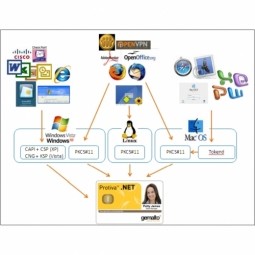Technology Category
- Automation & Control - Human Machine Interface (HMI)
Applicable Industries
- Education
- Life Sciences
Applicable Functions
- Facility Management
- Product Research & Development
Use Cases
- Inventory Management
- Smart Campus
Services
- System Integration
About The Customer
The University of Nottingham is a globally recognized institution, committed to providing a truly international education, inspiring students, and producing world-leading research. The University benefits the communities around its campuses in the UK, China, and Malaysia. It is home to over 43,000 students, more than 9,000 of them postgraduates. The University of Nottingham's position as a world-class University is confirmed by its ranking in the UK and European top 30 and by its position in the top 1 per cent of all universities worldwide. The University is committed to investing in its infrastructure and staff to support its researchers and their goals. The University's high-performance computing (HPC) facility underpins research in the areas of Science, Medicine, and Engineering.
The Challenge
The University of Nottingham, a world-class institution, is home to over 43,000 students and more than 100 research groups. The University's high-performance computing (HPC) facility supports research in various fields such as Science, Medicine, and Engineering. However, the University faced a challenge in managing the diverse computational workload efficiently. The HPC Service Manager, Dr. Colin Bannister, was keen on maximizing the benefits from the University's investment in HPC equipment. The University needed a powerful, flexible workload management suite that could ensure efficiency, usability, and performance. The desired system should enable efficient scheduling of computational workload, monitor and analyze workload, provide an easy-to-use interface, and produce straightforward management reports.
The Solution
The University of Nottingham conducted a detailed requirements specification to determine the best HPC workload management system. They found that the PBS Works suite, which includes PBS Professional, PBS Analytics, and Compute Manager, was the best fit for their criteria. The University had previously been using the Sun Grid Engine scheduler, which lacked equivalent features to Analytics or Compute Manager. Altair, the provider of PBS Works, prepared a proposal for configuring the system based on the University's 'HPC Policy' document. The HPC staff within the central IT at the University of Nottingham now run the PBS Works system. All users of HPC use PBS Professional to submit and monitor their jobs, while the HPC staff use PBS Analytics for analyzing workload data on the system. The University is also preparing to roll out the use of Compute Manager.
Operational Impact
Quantitative Benefit

Case Study missing?
Start adding your own!
Register with your work email and create a new case study profile for your business.
Related Case Studies.

Case Study
Corporate Identity Solution Adds Convenience to Beckman Coulter
Beckman Coulter wanted to implement a single factor solution for physical and remote logical access to corporate network. Bechman Coulter's users were carrying smart card badges for doors, but also needed a one-time password token to access to our corporate network when they were not in the office. They wanted to simplify the process.

Case Study
IoT platform Enables Safety Solutions for U.S. School Districts
Designed to alert drivers when schoolchildren are present, especially in low-visibility conditions, school-zone flasher signals are typically updated manually at each school. The switching is based on the school calendar and manually changed when an unexpected early dismissal occurs, as in the case of a weather-event altering the normal schedule. The process to reprogram the flashers requires a significant effort by school district personnel to implement due to the large number of warning flashers installed across an entire school district.

Case Study
Embracing Business Success in Real Time
· Increase control over growing Big Data to improve business decisions · Manage data for 28,000 biotechnology stockkeeping units in the fields of microbiology, molecular biology, animal cell cultures, plant tissue cultures, and lab ware for laboratory chemicals · Accelerate report generation and analysis with real-time data

Case Study
Revolutionizing Medical Training in India: GSL Smart Lab and the LAP Mentor
The GSL SMART Lab, a collective effort of the GSL College of Medicine and the GSL College of Nursing and Health Science, was facing a challenge in providing superior training to healthcare professionals. As clinical medicine was becoming more focused on patient safety and quality of care, the need for medical simulation to bridge the educational gap between the classroom and the clinical environment was becoming increasingly apparent. Dr. Sandeep Ganni, the director of the GSL SMART Lab, envisioned a world-class surgical and medical training center where physicians and healthcare professionals could learn skills through simulation training. He was looking for different simulators for different specialties to provide both basic and advanced simulation training. For laparoscopic surgery, he was interested in a high fidelity simulator that could provide basic surgical and suturing skills training for international accreditation as well as specific hands-on training in complex laparoscopic procedures for practicing physicians in India.

Case Study
Implementing Robotic Surgery Training Simulator for Enhanced Surgical Proficiency
Fundacio Puigvert, a leading European medical center specializing in Urology, Nephrology, and Andrology, faced a significant challenge in training its surgical residents. The institution recognized the need for a more standardized and comprehensive training curriculum, particularly in the area of robotic surgery. The challenge was underscored by two independent studies showing that less than 5% of residents in Italian and German residency programs could perform major or complex procedures by the end of their residency. The institution sought to establish a virtual reality simulation lab that would include endourological, laparoscopic, and robotic platforms. However, they needed a simulator that could replicate both the hardware and software of the robotic Da Vinci console used in the operating room, without being connected to the actual physical console. They also required a system that could provide both basic and advanced simulation training, and a metrics system to assess the proficiency of the trainees before they performed surgical procedures in the operating theater.

Case Study
Edinburgh Napier University streamlines long-distance learning with Cisco WebEX
• Geographically dispersed campus made in-person meetings costly and inconvenient.• Distance-learning programs in Malaysia, India, and China required dependable, user-friendly online tools to maximize interaction in collaborative workspaces.• Virtual learning environment required a separate sign-in process, resulting in a significant administrative burden for IT staff and limited adoption of collaboration technology.



